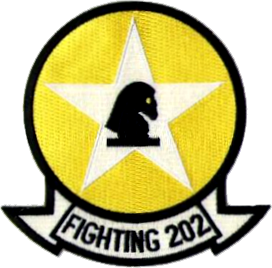
The VFA-201, Strike Fighter Squadron was an aviation unit of the United States Naval Reserve based at Naval Air Station Joint Reserve Base Fort Worth, Texas (USA). It was established in 1970 as part of Reserve Carrier Air Wing 20 (CVWR-20) and deactivated in 2007. During its service VFA-201 could be identified by the tail code "AF" and nose numbers (MODEX) in the "100" series, typically 100 to 113. The squadron's nickname was the Hunters.

Strike Fighter Squadron 81 (VFA-81), also known as the "Sunliners", is a United States Navy F/A-18E Super Hornet strike fighter squadron stationed at Naval Air Station Oceana. They are a part of Carrier Air Wing One, their radio callsign is Inferno, and their tail code is AB. Their mission is to conduct prompt and sustained combat operations from the sea. The squadron was originally designated VA-66 on 1 July 1955, was redesignated VF-81 the same day, redesignated VA-81 on 1 July 1959, and finally redesignated VFA-81 on 4 February 1988.

VF-301 Fighter Squadron 301 was an aviation unit of the United States Naval Reserve in service from 1970 to 1994. The squadron's nickname was Devil's Disciples.

Strike Fighter Squadron 204 (VFA-204), also known as the "River Rattlers", is a U.S. Navy Reserve strike fighter squadron flying the F/A-18A+ Hornet. The squadron is based out of Naval Air Station Joint Reserve Base New Orleans and is part of the United States Navy Reserve's Tactical Support Wing. Their radio callsign is River and their tail code is AF.
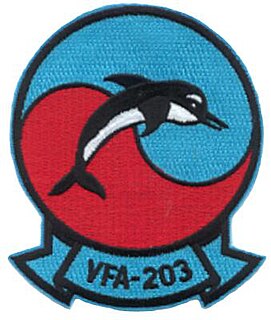
VFA-203, nicknamed the Blue Dolphins, was a Strike Fighter Squadron of the U.S. Naval Reserve. It was established as Attack Squadron 203 (VA-203) flying the A-4 Skyhawk at NAS Jacksonville, Florida on 1 July 1970, as a reserve force squadron (RESFORON) under a new concept in the reorganization of the Naval Air Reserve Force. The reorganization was intended to make the reserves more compatible with active duty units and to increase their combat readiness. It was deactivated on 30 June 2004.
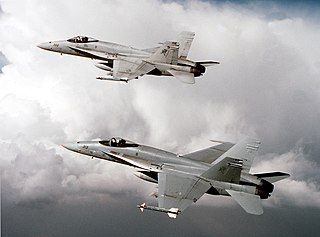
VFA-303, nicknamed the Golden Hawks, was a Strike Fighter Squadron of the U.S. Navy Reserve. It was established as Attack Squadron VA-303 on 1 July 1970 at NAS Alameda, California as part of a reorganization of the reserves intended to increase the combat readiness of the Naval Air Reserve Force. On 1 January 1984, it was redesignated VFA-303 and relocated to NAS Lemoore. It was disestablished on 31 December 1994.

VFA-305, nicknamed the Hackers from 1971-1974, and the Lobos from 1974-1994, was a Strike Fighter Squadron of the U.S. Navy Reserve. It was established as Attack Squadron VA-305 on 1 July 1970 at NAS Los Alamitos, California as part of a reorganization intended to increase the combat readiness of the Naval Air Reserve Force. It was relocated to NAS Point Mugu in January 1971. The squadron was redesignated VFA-305 on 1 January 1987, and disestablished on 31 December 1994.

VA-36, nicknamed the Roadrunners, was an Attack Squadron of the U.S. Navy. It was established as Fighter Squadron VF-102 on 1 May 1952, redesignated VA-36 on 1 July 1955, and disestablished on 1 August 1970. It was the first squadron to be designated VA-36, the second VA-36 was established on 6 March 1987 and disestablished on 1 April 1994.

VA-153 was an Attack Squadron of the U.S. Navy. During a 1949 reorganization of the Naval Air Reserve, a Fighter Squadron at NAS New York was redesignated Fighter Squadron VF-831. It was called to active duty on 1 February 1951. The squadron was redesignated as VF-153 on 4 February 1953, and finally as VA-153 on 15 December 1956. It was disestablished on 30 September 1977. The squadron's nickname was the Blue Tail Flies from 1953 onward.

VA-172 was an Attack Squadron of the U.S. Navy. It was established as Bomber Fighter Squadron VBF-82 on 20 August 1945, redesignated as Fighter Squadron VF-18A on 15 November 1946, as VF-172 on 11 August 1948, and as VA-172 on 1 November 1955. The squadron was disestablished on 15 January 1971. Its nickname was the Checkmates from 1946-1950, and the Blue Bolts thereafter.
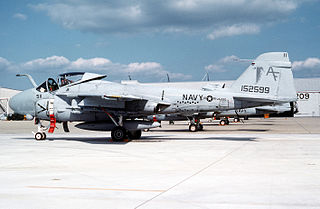
VA-205, nicknamed the Green Falcons, was an Attack Squadron of the U.S. Naval Reserve, based at Naval Air Station Atlanta, Georgia. It was established on 1 July 1970 and disestablished on 31 December 1994.

VA-209 was a short-lived Attack Squadron of the U.S. Naval Reserve. It was established on 1 July 1970 as part of a reorganization intended to increase the combat readiness of the Naval Air Reserve Force. It was based at Naval Air Station Glenview, Illinois, and flew A-4L Skyhawk aircraft. The squadron was disestablished after one year's service, on 15 August 1971, being replaced by the addition of two fighter squadrons to Reserve Air Wing 20.
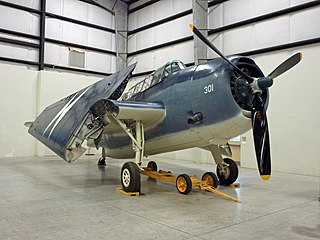
VA-214 was a short-lived Attack Squadron of the U.S. Navy. It was established on 15 September 1948 at Naval Air Station Seattle, Washington, and disestablished eight months later, on 16 May 1949. Its insignia and nickname are unknown.
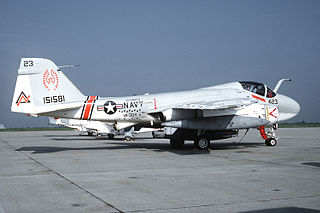
VA-304, nicknamed the Firebirds, was an Attack Squadron of the U.S. Navy Reserve, based at NAS Alameda, California. It was established on 1 July 1970, and disestablished almost 25 years later, on 31 December 1994.
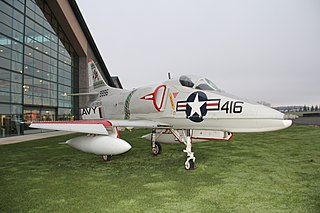
VA-776 was an Attack Squadron of the U.S. Navy Reserve. Details of its early years are sketchy, as few records exist for reserve squadrons prior to 1970, the year during which they began submitting history reports.

VA-831 was an Attack Squadron of the U.S. Navy Reserve. Details of its early years are sketchy, as few records exist for reserve squadrons prior to 1970, the year during which they began submitting history reports.

VA-44, nicknamed the Hornets, was an Attack Squadron of the US Navy. The squadron was established as Fighter Squadron VF-44 on 1 September 1950, and redesignated VA-44 on 1 January 1956. It was disestablished on 1 May 1970. It was the second squadron to be designated VA-44, the first VA-44 was disestablished on 8 June 1950.

Attack Squadron TWELVE, also known as the "Flying Ubangis" or "Clinchers", was an attack squadron of the United States Navy active during the Cold War. From their home port at Naval Air Station Cecil Field in Florida, the squadron made more than thirty major overseas deployments aboard aircraft carriers, primarily flying A-4 Skyhawk and later the A-7E Corsair II, including two combat tours in the Vietnam War.





